FUNCTIONS OVERVIEW:
CA Common Core educational goals are outlined below for the conceptual category of "Functions".
Interpreting Functions
- Understand the concept of a function and use function notation
- Interpret functions that arise in applications in terms of the context
- Analyze functions using different representations
Building Functions
- Build a function that models a relationship between two quantities
- Build new functions from existing functions
Linear, Quadratic, and Exponential Models
- Construct and compare linear, quadratic, and exponential models and solve problems
- Interpret expressions for functions in terms of the situation they model
CA Common Core Standards for Functions: View the full two-page discussion (excluding Trigonometric Function standards).
EDUCATIONAL STRATEGY: Business Statistics challenges students to synthesize their prior knowledge of functions with their development of financial literacy skills. Students employ financial functions to address a wide range of common real world decisions. EXCEL's function library offers students a pallet of options from which to choose. Skill development emphasizes: (1) student selection of the appropriate function to answer the question at hand; (2) the proper identification of inputs (independent variables) and the desired output (dependent variable); and (3) written and oral interpretation of the results. In this approach, arithmetic computation is deemphasized in recognition of the technological assistance available in Excel, standard statistical software packages and even the most basic calculators.
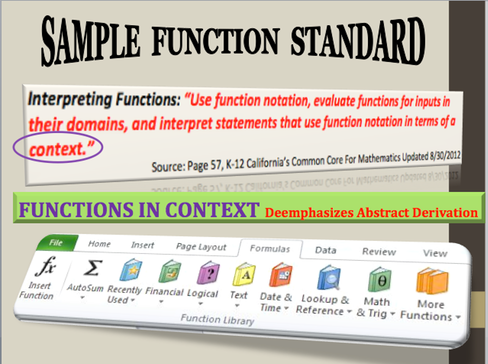
SIX FUNCTIONS OF THE DOLLAR & THE COMMON CORE: EXCEL deepens students’ conceptual understanding of a function. Inputs and output are more concrete, and students can directly connect their classwork with specific future needs. Evaluation of functions emphasizes two skills: first, the selection of an appropriate output function to match real world scenarios; and second, proper identification of the inputs necessary to evaluate the output function. Financial functions commonly use a variety of input combinations selected from the number of periods, rate, present value, future value and payment.
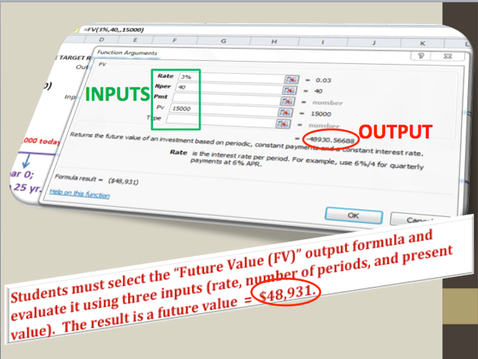
Use of current technology eliminates much of the tedious, time-consuming calculations that only demonstrate a student can apply PEMDAS using a calculator. Shown below is the basic progression of function instruction.
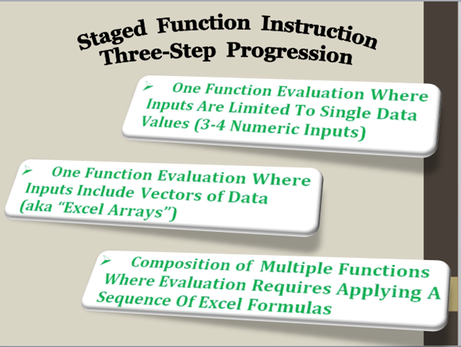
After the basic financial functions are understood, more complex financial applications are introduced that require a vector of numbers for one of the inputs or . . .
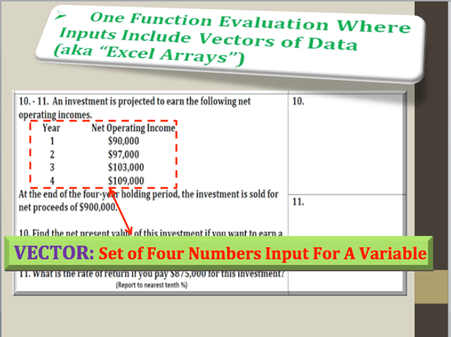
. . . function composition. EXCEL enables students to better understand the composition process that can be missed when presented in a solely abstract manner. Composition is taught in more realistic multivariate contexts. Note that the Common Core's composite function example considers merely a single input variable, time.
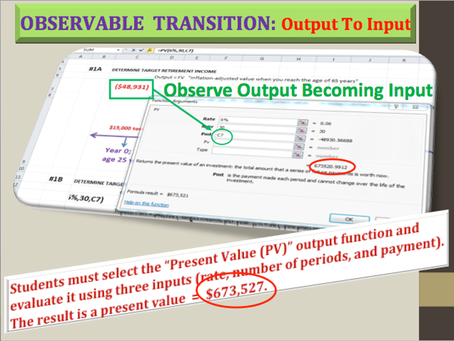
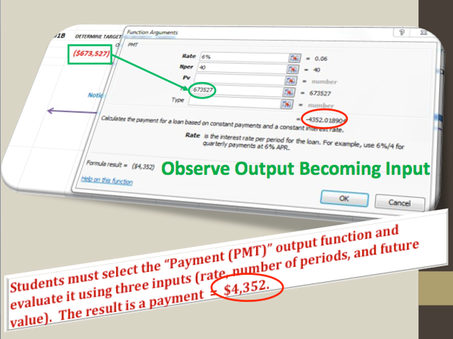
MORE DETAILS ON SIX FUNCTIONS OF THE DOLLAR INSTRUCTION